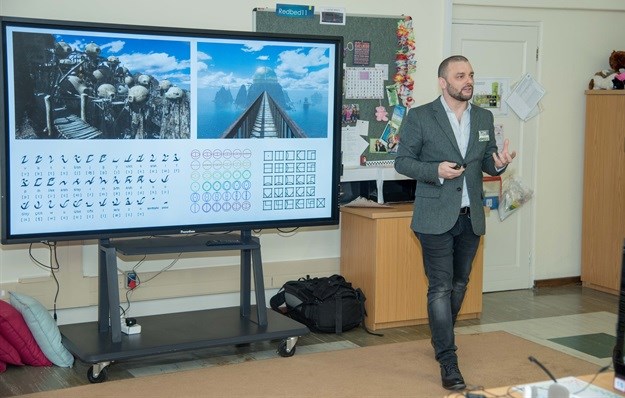
Subscribe & Follow
Advertise your job vacancies
Playing Minecraft today will prevent R2D2 taking your job tomorrow
Technology has deeply embedded itself within the modern workplace, enabling companies of all sizes to use innovation to disrupt the market, tackle challenges, take up opportunities and create demand for their offerings. Moreover, newer technology trends such as artificial intelligence, robotics and machine learning is enabling a lot of tasks, previously done by people, to be automated through the application of technology.

Stephen Reid, Minecraft ambassador and founder of Immersive Minds
This trend looks set to not only continue in future, but expand and quicken as research from McKinsey shows that around 45% of all paid activities currently being performed by US workers can be automated in future, using today’s existing technology. Additionally, McKinsey states that the majority (60%) of all US jobs will see around 30% of the activities involved in their job being automated.
Evolution of human thinking
This is not bad news, merely a natural part of the evolution of human thinking and behaviour. As our needs change, so do our solutions to meeting those needs - an intellectual response to the demands of the modern human world. It is our duty as educators to rise to these demands and assist our learners in developing the kinds of skills needed to play their own part in this digital evolution.
For your children to be successfully prepared for the workplace of tomorrow, today’s learners have to master the use of technology and acquire 21st century learning skill sets such as critical thinking, creative problem solving, collaboration and communication within groups of people from diverse countries and cultures.
Crafting the minds of tomorrow’s leaders and entrepreneurs
By using Minecraft as a platform for learning, Microsoft believes that it can do this and enable educators to motivate and inspire every student to achieve more, while igniting a passion for learning.
Minecraft: Education Edition brings the classroom and curriculum to students in an environment they are already comfortable with. It offers the same Minecraft experience many students enjoy already, but with some additional capabilities that enable them to collaborate in the classroom, as well as support for educators to deliver learning activities within the game.
One of the first teachers to integrate Minecraft as an educational tool in local classrooms is Keshma Patel, a grade six teacher at Micklefield Primary School for Girls in Cape Town. At the end of 2015, Keshma decided to explore using Minecraft in her class to promote creativity, collaboration, and problem solving.
She felt that she wanted to use the popular game as a tool for learning and introduced Minecraft in her classroom, even though she wasn’t entirely familiar with using it. This initiative has boosted the levels of attention and interactivity in the class, with students being more engaged with the subject matter.
Teamwork to solve problems
Minecraft: Education Edition has been designed so that students can work in teams to solve problems, or as a whole class to master challenges within the game. Engaging in collaborative work teams and learning environments that foster cooperation in the classroom helps prepare students for their futures.
Students are able to learn naturally through a combination of observation, trial and error, and play-based practice. An open-learning environment like Minecraft allows students the freedom to experiment and challenge themselves. Much like in real life, there are no step-by-step instructions — students must try, fail, and try again to achieve the result they want.
To create a fully inclusive classroom, educators are challenged to create learning activities that cater to all types of learners. Learning-by-doing gives students a sense of accomplishment when they can demonstrate their knowledge. And in Minecraft: Education Edition, educators are able to map projects and activities directly to specific learning outcomes and curriculum standards.
Doing so, enables the game to play a crucial role in preparing the next generation of scientists, subject matter experts, business and political leaders, whose jobs involve a range of un-automatable skills.










